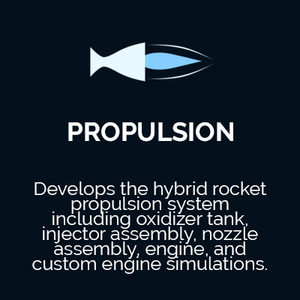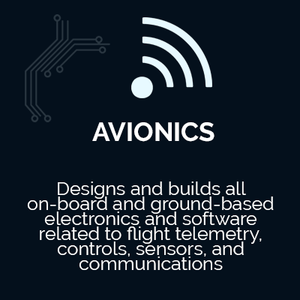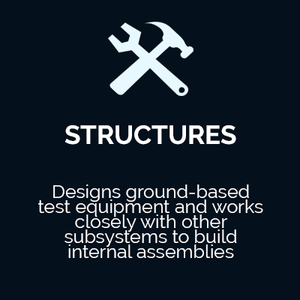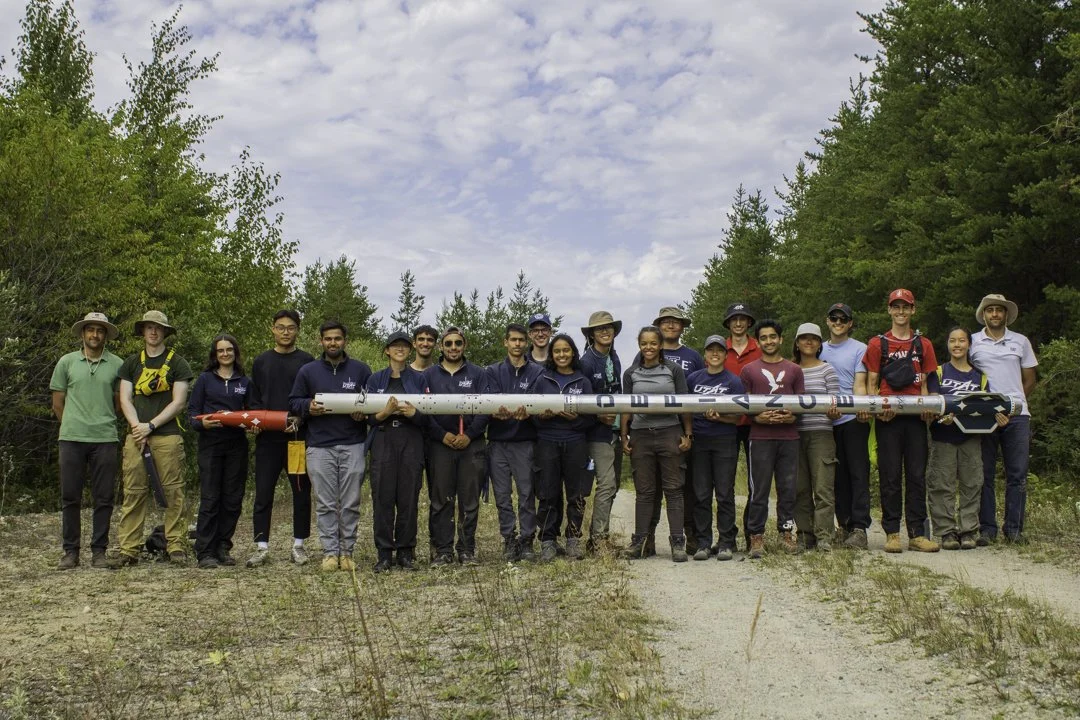
Rocketry
The UTAT Rocketry division has a mission to develop expertise in the design of high-altitude sounding rockets. We accomplish this in three fields of rocketry by developing liquid, hybrid and solid engined rockets at a variety of scales.
Project Overview
Defiance
Achievements and Records
With the Defiance series, UTAT Rocketry holds a series of records:
First experimental hybrid launch in Canada - flown in August 2022. Achieved an apogee 21,000 ft at the inaugural Launch Canada competition
Highest altitude Student Research and Developed (SRAD) advanced engine in Canada. Achieved an apogee of 30,500 ft and top speed of Mach 1.4 at Launch Canada 2024
And has earned podium places at Launch Canada, three years in a row:
First Place in the Advanced Category - LC2022
Third Place in the Advanced Category - LC2023
Second Place in the Advanced Category - LC2024
Defiance is a hybrid-propellant rocket that UTAT has been developing since 2017, with a target altitude of 30,000 ft. Defiance uses parachute recovery and has several telemetry modules which relay GPS coordinates from the nose cone and avionics bay of the rocket to the ground station operators. The entire project and the necessary infrastructure to operate it (such as cold flow and hot fire engine test stands) have been developed, built, and tested by UTAT Rocketry.
Originally, Defiance was designed for an altitude of 60,000 ft, aiming to break the Canadian amateur rocketry altitude record with a hybrid. We later decided through various testing results that the aspect ratio of such a slender rocket would not be structurally viable, and we decided to reduce the rocket's length and consequently the altitude target.
In the end, we broke a different kind of record, achieving the first experimental hybrid rocket flown in Canada.
This is an incredible achievement for the University of Toronto. It took a monumental effort from everyone involved and the invaluable effort of the University of Toronto Institute of Aerospace Studies, UTIAS, who provided us with the facilities and space needed to test and build Defiance. It was truly a project that redefined limits!
Vehicle Architecture
Rocket Name: Defiance
Vehicle Configuration: Single Stage
Propulsion System: N₂O / Paraffin Hybrid Engine
Propellant Load: 16.9 kg N₂O Oxidizer / 3.8 kg Paraffin Wax Fuel Core
Total Impulse: 38,428 Ns
Airframe Length: 546 cm / 215 in
Airframe Diameter: 14 cm / 5.5 in
Dry Mass: 39.61 kg / 87.32 lbs
Wet Mass: 61.89 kg / 136.4 lbs
Rocket Name: Defiance
Propulsion System: L1000W booster, K850DM sustainer
Airframe Length: 289.56 cm / 114 in
Airframe Diameter: 10.16 cm to 10.16 cm / 4 in to 4 in
Dry Mass: 6.9 kg / 15.2119 lbs
Wet Mass: 11.2 kg / 24.69 lbs
Discovery
Discovery is the team’s first-ever liquid propellant rocket. This project aims to grow our expertise in liquid engine development, with the ultimate goal of developing a liquid rocket that can breach the Karman line, reaching the edge of space. Discovery has a target altitude of 10,000 ft and will serve as a stepping stone toward future high-altitude liquid projects.
Discovery aims to integrate multiple new technologies for the team (beyond the liquid engine), including a non-structural aero-body which should significantly reduce assembly time, making launch preparations more efficient. Discovery will also incorporate dual-separation dual-deployment recovery, which should significantly improve the recovery system’s reliability.
Vehicle Architecture
Dauntless
Dauntless is the team’s first-ever staging rocket, which aims to grow our expertise in staging rockets with the ultimate goal of developing a hybrid-solid staging rocket.
Solid Rocket Certification Program
One of our key initiatives is a solid rocket certification program, which trains our members with basic rocketry and prepares them for engaging more thoroughly with the team.
Team Structure





Team Leadership
-
Lianne Choong
Director of Rocketry
-

Sritejas Murugan
Liquid Chief Engineer
-

Jocelyn Wall
Liquid System and Project Manager
-

Bhakti Chohan
Hybrid Chief Engineer
-

Rodrigo Salazar
Hybrid System and Project Manager
-

Jessie Lin
Solid System and Project Manager
-

Julia Xu
Operations Manager
Rocketry Leads
-

Nadim Hatoum
Aerodynamics Lead
-

Jack Arata Amodeo
Airframe Lead
-

Kaden Roschuk
Airframe Lead
-

Aspen Erlandsson
Avionics Leads
-

William Gomez
Avionics Lead
-

Abdul Asa'd
Hybrid Propulsion Lead
-

George Chen
Hybrid Propulsion Lead
-

Chris Cheng
Recovery Lead
-

Mario Arambula Galindo
Liquid Propulsion Lead
-
Yubo Wang
Liquid Propulsion Lead
-

Joao Pedro Boaventura
Structures Lead
-

Amelia Elis
Software Lead
Portfolio Leads
-

Mashoodah Patel
Business Development Specialist
-

Sabiha Ahmad
Brand & Media Specialist
-

Kira Modylevsky
Logistics Specialist
-

Eryn Richardson-Bartha
Outreach and Organizational Development Liaison
-

Maximiliano Weinstein
Chief Safety Officer
-

Vasanth Chockalingam
Portfolio Specialist











